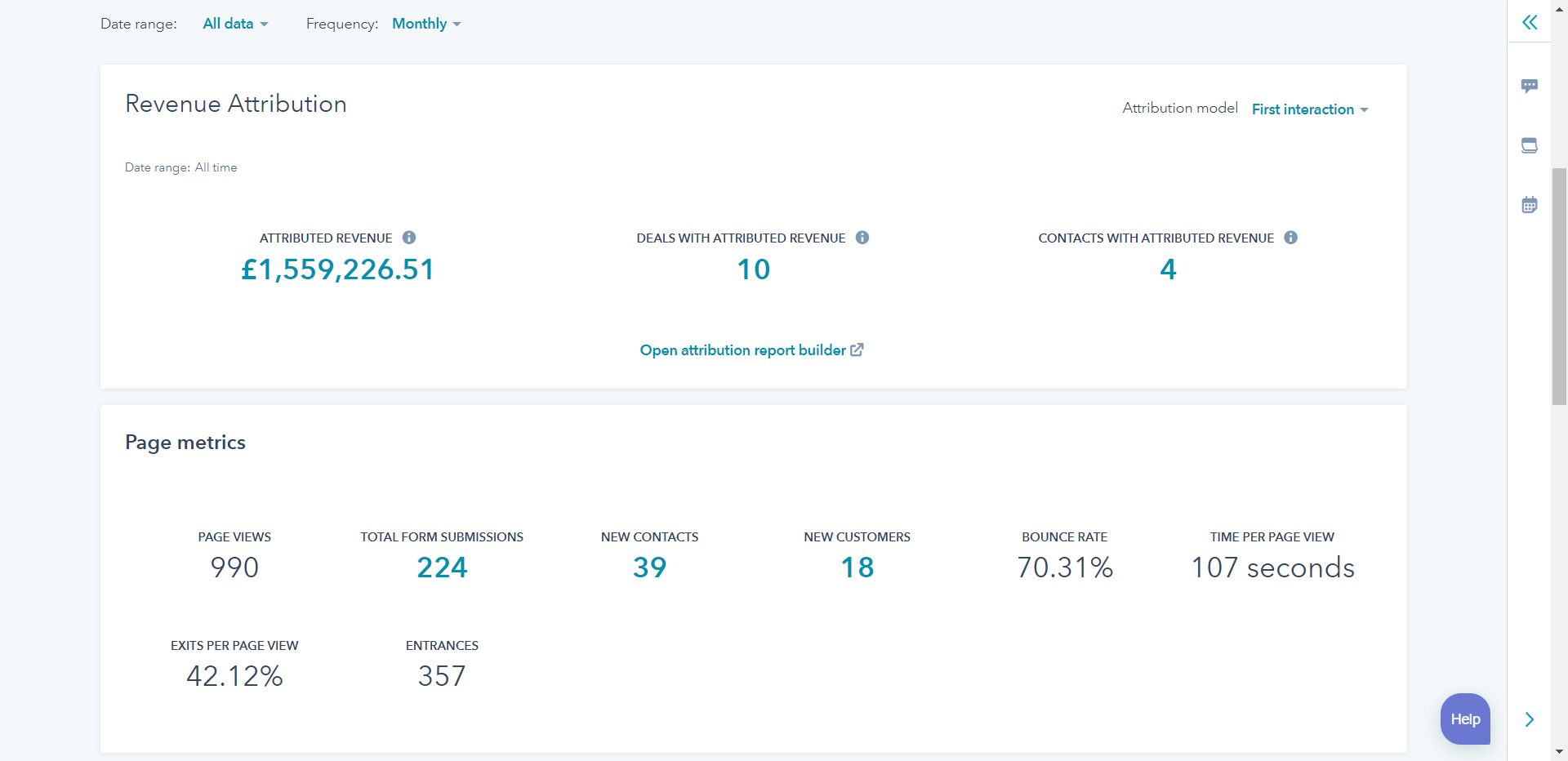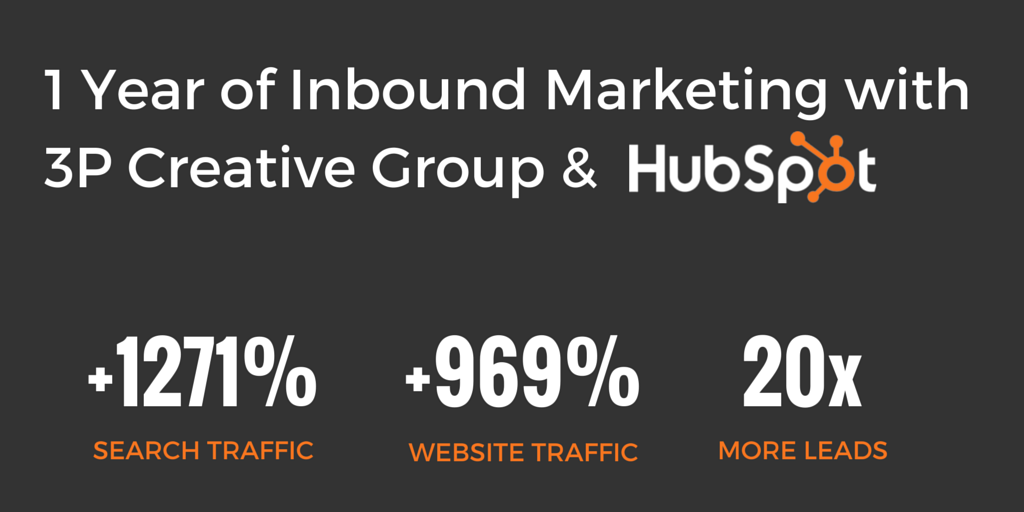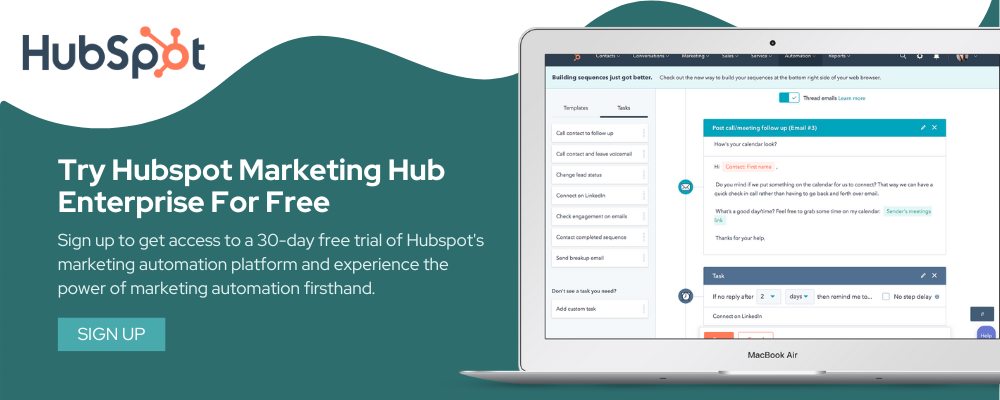How To Measure Your Inbound Marketing ROI
Inbound marketing is a powerful tool for businesses looking to maximize their ROI. With the right strategies and tools, you can generate leads more efficiently, convert them into customers faster and measure your return on investment accurately.
To make sure that you are getting maximum value from your inbound marketing efforts, it's crucial to understand how to calculate its ROI as well as best practices for optimizing campaigns.
In this blog post, we will discuss what inbound marketing is, how measuring its ROI helps guide decisions around campaign optimization, and leverage HubSpot effectively for an even greater impact on overall returns. By understanding these key points about inbound marketing ROI, you’ll be able to drive better results with fewer resources – ultimately leading to higher profits!
Topics Covered In This Article:
- Measuring the ROI of Inbound Marketing
- Optimizing Your Inbound Marketing Efforts for Maximum ROI
- Maximize Your Inbound Marketing ROI With Hubspot
- Best Practices for Maximizing Your Inbound Marketing ROI
- Inbound Marketing ROI FAQs
Measuring The Return On Investment (ROI) Of Inbound Marketing
Measuring the ROI of Inbound Marketing is essential for any business that wants to maximize its marketing efforts. Understanding your goals and objectives, identifying key performance indicators (KPIs), and calculating the return on investment (ROI) are all important steps in this process.
Understanding Your Goals and Objectives
Before measuring the success of your inbound marketing efforts, it’s important to understand what you want to achieve with them. Defining clear goals and objectives will help ensure that you have a benchmark against which to measure progress. For example, if one of your goals is increasing website traffic by 10%, then tracking website visits should be one of your KPIs.
Identifying Key Performance Indicators (KPIs)
Once you have established clear goals and objectives, it’s time to identify the KPIs that will help you track progress toward those targets. These metrics should be specific enough so that they accurately reflect how well your inbound marketing strategy is performing but also broad enough so as not to miss out on any potential opportunities or successes along the way.
Avoid focusing on vanity metrics, such as:
- # Monthly visits to the website
- # New social media followers
- # Ad impressions
While it is a good idea to keep an eye out for these metrics, they are not ROI-focused. For example, increasing the visits to your website by 100% doesn't mean anything if this isn't leading to any conversions.
Instead, focus on the following key performance indicators as singular metrics and how they relate to each other:
- Monthly Organic & Direct Website Visits. This is the traffic you influence through inbound marketing.
- Visitor to New Contact Conversion Rate. Aim for a +1% conversion rate between # of website visits to new contacts.
- New Contact to Sales Appointment Conversion Rate. This tells you how good your leads are as they turn into sales appointments.
- Attributed Revenue To Blog Post/Landing Page/Website Page. This is essential to understand what topics and formats directly influence revenue and what doesn't work.
- # of influenced contacts. Most Inbound Marketing ROI calculations only focus on new contacts generated. Don't forget about how important it is to keep nurturing your existing contacts.
Calculate The Return On Investment (ROI)
Once measurable KPIs have been established to track progress toward desired outcomes from an inbound marketing campaign, it is time to calculate its return on investment (ROI). This calculation will compare actual results achieved with expected results based on initial investments made into the campaign, such as costs associated with content creation or advertising campaigns used for promotion. This will provide insight into whether investing further resources into similar campaigns would be beneficial going forward or if adjustments need to be made before continuing down this path.
Now, let's look at how to use those measurements to optimize your inbound marketing strategy.
💡Key Takeaway:
Measuring the ROI of Inbound Marketing is essential for any business that wants to maximize their marketing efforts. Defining clear goals and objectives, identifying key performance indicators (KPIs), and calculating the return on investment (ROI) are all important steps in this process to ensure success.
Optimizing Your Inbound Marketing Efforts for Maximum ROI
Optimizing your inbound marketing efforts for maximum ROI requires a thorough understanding of the strategies and tactics that are working, as well as those that need to be adjusted or improved. By analyzing current results and strategies, making adjustments to improve performance, tracking progress and refining strategies accordingly, you can maximize your ROI.
Analyzing Your Current Results and Strategies
To optimize your inbound marketing efforts for maximum ROI, it is important to analyze the current results of your campaigns. This includes metrics such as conversion rate from leads to customers, customer lifetime value (LTV), cost per acquisition (CPA), etc.
Additionally, what strategies have been successful so far. Which channels are driving the most traffic? Which content pieces have generated the most engagement? Answering these questions will help inform future decisions about where best to focus resources.
Making Adjustments to Improve Performance
Once you have identified areas where improvements are needed or desired within your inbound marketing strategy – whether that is optimizing existing content or creating new pieces – make sure you track changes over time so you can measure their impact on overall performance. For example, if you adjust the copy on a landing page or create an additional email campaign targeting a specific segment of prospects, monitor how these changes affect key metrics like website visits and conversion rates.
Tracking Progress & Refining Strategies
Tracking progress and refining strategies are essential for any digital marketing effort. Utilizing analytics tools such as HubSpot can help measure revenue attribution across all inbound marketing activities, including the performance of blog posts, website pages, landing pages, social media posts, or entire campaigns. This data-driven approach should be used when refining existing tactics or introducing new ones into the mix to ensure that resources are being allocated efficiently while maximizing ROI potential over time.
By optimizing your inbound marketing efforts, you can increase the ROI of your campaigns and make sure that you are getting the most out of your investment. Next, we'll discuss how to track progress and refine strategies for continued success.
💡Key Takeaway:
Optimizing inbound marketing efforts for maximum ROI requires analyzing current results and strategies, making adjustments to improve performance, and tracking progress over time. Utilize analytics tools such as HubSpot Marketing Hub in combination with the Hubspot CRM to measure success across all channels and refine existing tactics or introduce new ones to maximize ROI potential.
Leveraging HubSpot for Maximum ROI on Your Inbound Marketing Efforts
Leveraging HubSpot for Maximum ROI on Your Inbound Marketing Efforts is a great way to ensure that your inbound marketing efforts are as effective and efficient as possible. Utilizing HubSpot's automation tools can help you save time and money while still getting the desired results.
Automation tools such as workflows, email sequences, and automated lead scoring can help streamline processes so that you do not have to do them manually. Additionally, integrating HubSpot with other platforms like social media or website analytics can give you more visibility into how well your campaigns perform across multiple channels.
Finally, taking advantage of HubSpot allows you to monitor performance in real-time and make data-driven decisions based on what works best for your business. Features such as dashboards, reports, and metrics tracking capabilities enable you to see which tactics are most effective at any given moment so that adjustments can be made promptly if necessary. This helps maximize ROI by ensuring resources aren't wasted on ineffective strategies or campaigns.
For example, below is the screenshot of the Revenue Attribution section of a specific landing page of a client of ours. It shows how much revenue this specific sales enablement asset contributed to the company's bottom line based on the first interaction.

Next, we will look at how to measure success and optimize your campaigns for even better results.
Best Practices for Maximizing Your Inbound Marketing ROI
To maximize your Inbound Marketing ROI, it is vital to develop a comprehensive content strategy. This should include creating content targeted towards your ideal customer and aligning with their needs and interests. Additionally, you should focus on providing value through the content by offering helpful tips or insights that can help them solve their problems. Establishing clear goals and objectives for your inbound marketing efforts will also help ensure success. For example, if you want to increase website traffic from organic search results, set specific targets for increasing page views or reducing the bounce rate over time.
Creating a systematic process for testing, tracking and refining strategies is key to optimizing performance over time. To begin, set up A/B tests on different elements of your campaigns, such as headlines or call-to-action buttons to identify which versions perform best with customers.
Track progress using analytics tools like HubSpot's dashboard, which allows you to monitor metrics such as leads generated or revenue attributed per blog post over time so that data-driven decisions can be made about how to adjust tactics accordingly. Finally, refine strategies based on the results of these tests and analytics data so that each campaign performs better than the last one while still achieving desired outcomes within budget constraints.
By following the best practices outlined in this article, you can ensure that your Inbound Marketing strategies are set up for success and maximize your return on investment. Next, let's discuss how to develop a comprehensive content strategy.
Inbound Marketing ROI FAQs
What is a good ROI in marketing?
A good return on investment (ROI) in marketing depends on the specific goals of a business. Generally, an ROI of 3:1 or higher is considered successful. This means that for every dollar spent on marketing, three dollars are earned in revenue.
To ensure a positive ROI, businesses should focus their efforts and resources on activities that generate leads and conversions. Additionally, tracking key performance indicators such as website visits, lead generation rate and customer lifetime value can help measure the success of campaigns over time to ensure maximum returns from investments made into marketing initiatives.
Which marketing has the highest ROI?
Inbound marketing has consistently been proven to have the highest ROI of any other form of marketing. By creating content that is valuable and engaging, businesses can attract potential customers and convert them into leads. This type of marketing focuses on providing helpful information to prospects to nurture relationships over time.
Additionally, it allows companies to track their results more accurately than traditional outbound methods such as print or television advertising. In summary, inbound marketing offers a higher return on investment due to its focus on customer engagement and tracking capabilities.
What is a good marketing ROI in B2B?
A good marketing ROI in B2B is typically measured by the return on investment (ROI) generated from marketing activities. Generally, a positive ROI means that for every dollar spent on marketing, more than one dollar was earned as a result of those efforts. A successful B2B campaign should aim to generate an ROI of at least 3:1 or higher.
This can be achieved through effective strategies such as targeted campaigns, lead nurturing and conversion optimization techniques. With the right coaching and inbound marketing strategy, businesses can expect to see increased sales and revenue over time with improved returns on their investments.
Is Inbound Marketing more effective than other methods of marketing?
Yes, inbound marketing is more effective than traditional outbound methods. It involves creating content that attracts potential customers to your website and other digital channels, instead of pushing messages out through advertising or cold calls. Inbound marketing focuses on providing value to the customer before asking for anything in return, resulting in higher engagement rates and increased brand loyalty. Additionally, it can be tracked and measured more accurately than traditional outbound tactics which makes it easier to optimize campaigns for better results.
Conclusion
In conclusion, inbound marketing is a powerful marketing strategy for driving ROI. It requires time and resources to create content that resonates with your target audience, but the rewards can be substantial. Leverage Hubspot to ensure you maximize your inbound marketing ROI while making meaningful connections with potential customers. With a well-crafted strategy and thoughtful execution, you'll soon be reaping the benefits of increased sales opportunities and higher customer retention rates.
Are you looking to increase your ROI with inbound marketing? Whether you are looking to bring your marketing in-house or get the most out of Inbound Marketing utilizing an agency, our experienced team will help create an effective strategy and guide you through the process from start to finish so that you can maximize your return on investment.
Share this
You May Also Like
These Related Stories

How Inbound Marketing Directly Impacts Your Marketing ROI

Unlocking the Power of Content-Centric SEO

.png?width=250&height=125&name=TrustBuilderLogoWhiteTranspBackgr(250x125%20px).png)



No Comments Yet
Let us know what you think